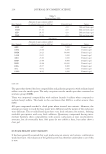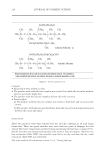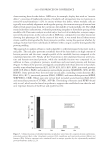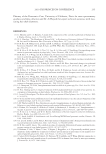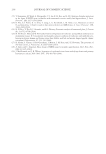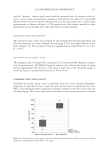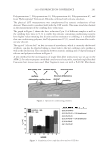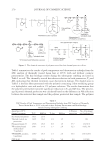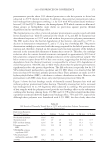2010 TRI/PRINCETON CONFERENCE 247 and the “dynamic” contact angle were found for untreated hair. In contrast to the dy- namic contact angle measurements, signifi cant hydrophobization effects for proteolipid SR were observed even on medium bleached hair by using the pseudo-static contact angle measurement, as shown in Figure 12. The application of the droplet method on ultra bleached hair is not feasible due to the quick water resorption by hair. RESORPTION TIME OF WATER BY HAIR The resorption time of the water droplet by the medium bleached hair (II) before and after the treatment of a basic shampoo B containing 0.15% proteolipid SR was deter- mined (Figure 13). The resorption time was signifi cantly extended from 79 s to 140 s (p 0.05). PREVENTION OF HAIR SURFACE AGING The multiple usage of shampoo B containing 0.15% proteolipid SR during the simula- tion of approximately 100 Middle European summer days reduced the degree of aging damage signifi cantly. The decrease of the contact angle due to the simulated aging, as shown in Figure 6, signifi cantly lowers by 11.4% (p0.05). SUMMARY AND CONCLUSIONS Simulated day-by-day aging causes a signifi cant reduction of the natural hydrophobic properties of virgin hair. Contact angles strongly decrease due to a signifi cant loss of 18- MEA. Ultra bleaching shows signifi cantly stronger damage on the hair surface than the simulated aging. The contact angle of hair with water is an accurate parameter to evaluate Figure 12. Pseudo-static contact angle on medium bleached hair (II) before and after application of basic shampoo B containing proteolipid SR (0.15%, m/m).
JOURNAL OF COSMETIC SCIENCE 248 Figure 13. Resorption time of water droplets by medium bleached hair (II) before and after application of basic shampoo B containing proteolipid SR (0.15%, m/m). the damage degree of the hair surface and the intactness of the F-layer. Contact angles can be determined on single hair fi bers indirectly by means of dynamic wetting force mea- surements according to Wilhelmy and directly by evaluation of water droplets on hair strands under “pseudo-static” conditions. For the latter approach a new method was es- tablished. The results of this method correlate well for untreated hair to the correspond- ing Wilhelmy-data. The determination of the resorption time of the water droplets by hair offers an additional test parameter to characterize the constitution of the hair sur- face. Specifi c proteolipids, which are lipid modifi ed proteins, show a very high affi nity to dam- aged areas on the hair surface. This was confi rmed by fl uorescence microscopy and scan- ning force microscopy studies. The distribution strongly depends on the damage degree of outer hair surface. Due to the high surface deposition on damaged hair, proteolipids are able to restore the natural hydrophobic properties of virgin hair. This surface restoration leads to an extended resorption time of water by hair. ACKNOWLEDGMENTS The authors wish to thank Ahmed Mourran, DWI an der RWTH Aachen, for the perfor- mance of the scanning force microscopy measurements of human hair. REFERENCES (1) H. Tanamachi, S. Tokunaga, N. Tanji, M. Oguri, and S. Inoue, 18-MEA and hair appearance, J. Cosmet. Sci., 61, 147–160 (2010). (2) Y. Masukawa, H. Tsujimura, H. Tanamachi, H. Marita, and G. Imokawa, Damage to human hair caused by repeated bleaching combined with daily weathering during daily life activities, Exog Dermatol, 3, 273–281 (2004).
Purchased for the exclusive use of nofirst nolast (unknown) From: SCC Media Library & Resource Center (library.scconline.org)



































































































































